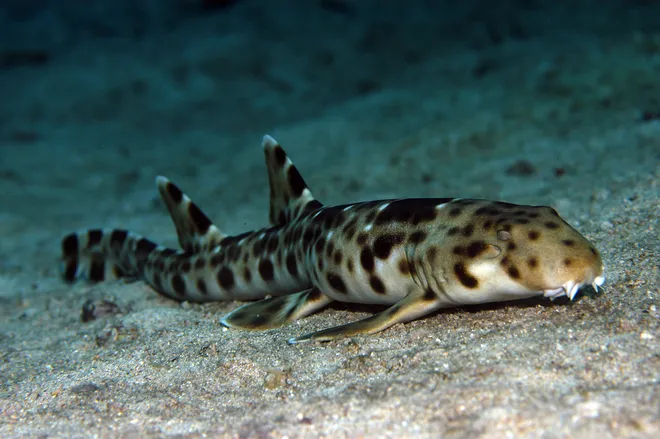Rare ‘virgin birth': Baby shark asexually reproduced at Brookfield Zoo, second in the US
In a rare instance, a shark at Brookfield Zoo gave birth through asexual reproduction.
The Zoo, located just outside of Chicago. announced on Wednesday that the Epaulette shark pup hatched on Aug. 23. This is believed to be the second time an epaulette shark was asexually reproduced in a US zoo.
The shark pup was born to a female shark who had not been housed with a male shark since she arrived at the facility in 2019.
The embryo had developed in a process known as parthenogenesis, which means it grew without being fertilized by a males genetic material. Even more fascinating, the female shark was only 3-years-old when this happened. The species typically reaches sexual maturity when they're around 7 years old.
According to a press release, the female shark began laying eggs every month beginning last year. Most of the eggs were infertile, except one that was fertile. Five months later, the egg hatched, and is now two months old and approximately five to six inches long. It can grow to be as long as three feet.
The new pup can now be seen living in one of the Zoo's habitats.
“We are happy to report that our epaulette pup has been eating well on her diet of finely chopped capelin, minced squid tentacles, and other finely chopped seafood. Our colleagues at New England Aquarium have been a great resource as shark pups produced parthenogenetically can be very delicate,” Mike Masellis, a lead animal care specialist at Brookfield Zoo said in the press release.

More:'Jaws' may need a remake: Drone images show sharks living in harmony with humans: Graphics
Only the second asexually reproduced Epaulette shark in US
According to the zoo, while parthenogenesis naturally occurs in some invertebrates, it's not very common with sharks.
The only other known instances of an Epaulette shark born this way came from the New England Aquarium. The female sharks at Brookfield Zoo came from the New England Aquarium.
Other species of sharks have also reproduced asexually in the past. The National Oceanic and Atmospheric Administration reported that this has been seen in at least two species of sharks.
More:Unlikely friends: 2 great white sharks seen traveling the Atlantic in tandem shock researchers

Disclaimer: The copyright of this article belongs to the original author. Reposting this article is solely for the purpose of information dissemination and does not constitute any investment advice. If there is any infringement, please contact us immediately. We will make corrections or deletions as necessary. Thank you.

